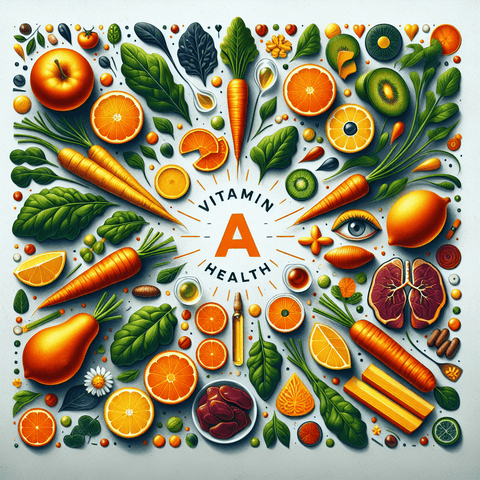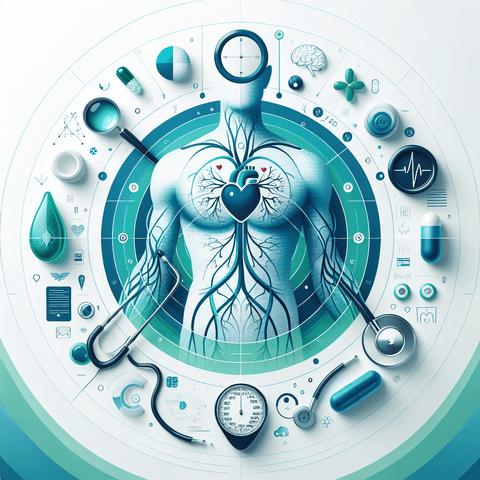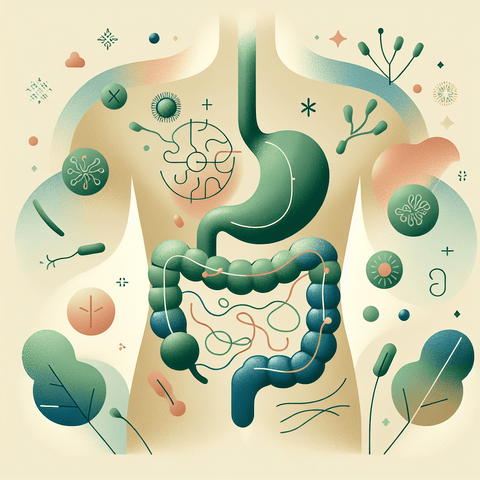Introduction
Vitamin A is one of the most critical nutrients your body needs for optimal health. Known for its implications in vision, immunity, skin health, cellular communication, and reproduction, vitamin A is often described as a foundational micronutrient. While it’s widely recognized for preventing night blindness and promoting healthy eyesight, vitamin A does far more than support your vision—it is involved in nearly every major function in your body.
With rising awareness of health and nutritional deficiencies, people are increasingly turning to both food and supplementation to meet their daily requirements. But where exactly can you get a lot of vitamin A? In this comprehensive blog post, we’ll dive deep into the best sources of vitamin A, explore its numerous health benefits, discuss signs of deficiency, and provide practical strategies to boost your intake naturally. Whether you’re looking to enhance your daily meals or exploring the right supplement for your needs, this guide will help you build a strong foundation for wellness through informed, evidence-based choices.
Understanding Vitamin A in Nutritional Supplements
Vitamin A refers to a group of fat-soluble retinoids, including retinol, retinal, and retinyl esters, along with provitamin A carotenoids like beta-carotene. It is essential not only because the body cannot produce it on its own, but also due to the broad functions it performs within the human body. These functions include maintaining healthy vision, supporting immune function, facilitating cellular communication, and promoting reproductive health.
Vitamin A is present in various forms in nutritional supplements. The most common ones include:
- Retinol: The most active form of vitamin A found in animal-based products.
- Beta-carotene: A powerful provitamin A antioxidant found in colorful fruits and vegetables.
- Preformed Vitamin A: Found in supplements and some fortified foods; includes all retinoid forms ready for use by the body.
While the Recommended Dietary Allowance (RDA) for adult men is 900 micrograms (mcg) of retinol activity equivalents (RAE) per day and 700 mcg RAE for adult women, needs can vary based on age, gender, pregnancy, and breastfeeding status. Excess intake of preformed vitamin A through supplements can lead to toxicity, making it crucial to adhere to recommended amounts, especially when complementing dietary sources with supplements.
For individuals requiring enhanced nutritional support—such as those with malabsorption conditions, hospital-based diets, or restricted food intake—supplements offer a reliable means to bridge dietary gaps. At Topvitamine.com, you can find a variety of high-quality supplements to meet your needs, tailored for immune health and nutrient optimization.
Vitamin A-Rich Foods: Natural Powerhouses for Your Body
Whole foods remain the most effective and safest way to meet your daily vitamin A requirements. Both animal-based and plant-based foods offer considerable amounts of this micronutrient. The bioavailability and type of vitamin A differ significantly depending on the source, which makes variation and balance critical in diet planning.
Animal-based sources contain retinol, the active form of vitamin A. These sources are considered more bioavailable because the body can use them immediately without additional conversion steps. The most concentrated animal sources include:
- Beef liver: Perhaps the most potent natural repository of retinol.
- Fish liver oils (e.g., cod liver oil): Rich in vitamins A and D.
- Egg yolks: Provide modest amounts of preformed vitamin A.
- Whole milk and dairy products: Good sources, especially in fortified forms.
On the flip side, plant-based sources contain carotenoids like beta-carotene, which the body converts into vitamin A. These vibrant-colored fruits and vegetables are also packed with other antioxidants and fiber, offering holistic benefits. The best options include:
- Carrots: A beta-carotene superstar commonly associated with eye health.
- Sweet potatoes: Highly nutritious with one of the highest beta-carotene concentrations.
- Spinach and kale: Dark leafy greens rich in multiple micronutrients.
- Red bell peppers, mangoes, cantaloupe, and apricots: Fruity ways to add beta-carotene.
While animal sources provide readily usable vitamin A, plant-based options offer slow conversion, serving as a natural regulatory mechanism against overdose. Including both types in your routine ensures steady and adequate intake. Furthermore, variability in meal planning enhances nutrient diversity and palate satisfaction.
Vitamin A Dietary Sources: The Top Foods to Include in Your Meals
If you’re looking for specific foods to add to your grocery list, the following items rank among the top sources of vitamin A:
- Beef Liver: A single 85g (3-ounce) serving can provide over 600% of your daily requirement.
- Carrots (raw): One carrot contains about 509 mcg of RAE—over 50% of the RDA for women.
- Sweet Potatoes (baked): One medium sweet potato offers nearly 961 mcg RAE—exceeding the RDA.
- Spinach (cooked): One half-cup gives over 570 mcg of RAE.
- Cod Liver Oil: One tablespoon provides over 4,000 mcg, which’s significantly more than the RDA—excellent for therapeutic doses but must be used cautiously.
- Butternut Squash: A flavorful source providing around 1144 mcg RAE per cup.
- Fortified breakfast cereals and dairy: These are especially helpful for people with dietary restrictions on natural sources.
Cooking methods also influence vitamin A retention. For example, steaming vegetables like spinach preserves more nutrients than boiling, while incorporating a source of dietary fat (like olive oil or avocado) into your meals significantly enhances the absorption of fat-soluble vitamins like vitamin A.
If you’re looking for reliable high-quality options to complement your diet, consider checking out our DHA and EPA Omega-3 collections, which work synergistically with fat-soluble vitamins to enhance absorption and overall health.
Vitamin A Benefits: Why This Nutrient Is Essential for Your Health
The roles of vitamin A are complex and profound, influencing virtually every facet of health. Let’s break down its key benefits:
- Eye Health: Vitamin A is essential for the maintenance of photoreceptors in your retina. A deficiency can lead to night blindness and more acute visual impairments. Retinol is a core component of rhodopsin, a protein enabling vision in low-light conditions.
- Immune Health: Vitamin A regulates immune responses and helps in the development of white blood cells. It is particularly critical during infections, where a robust immune response is needed.
- Skin Integrity: From acne management to skin regeneration, vitamin A maintains epithelial tissues and is often found in dermatological products. It promotes epidermal turnover, influencing complexion and skin texture.
- Cellular Development: As a significant contributor to organogenesis, vitamin A plays a critical role in embryonic development and helps maintain tissues throughout life.
- Anti-inflammatory Properties: Preliminary research suggests vitamin A may support mechanisms that reduce oxidative stress and chronic inflammation, thereby contributing to the prevention of cellular damage and potentially reducing cancer risks. However, EFSA-approved claims are limited.
- Reproductive Health: Vitamin A is vital for fertility in both males and females and supports fetal organ development during pregnancy.
To support these benefits, consider pairing vitamin A foods and supplements with vitamins that support synergistic functions, for example, vitamin D for immune function and vitamin K for bone health and proper calcium regulation.
Vitamin A Deficiency: Recognizing and Addressing the Problem
Vitamin A deficiency is a significant health concern, particularly in developing countries where access to nutrient-rich foods is limited. The World Health Organization estimates that approximately 250 million preschool children worldwide are vitamin A deficient. Even in developed nations, certain groups remain at risk.
Signs and symptoms of vitamin A deficiency include:
- Night blindness or difficulty seeing in dim light
- Dry eyes and an increased risk of infections (xerophthalmia)
- Dry, flaky skin
- Delayed wound healing
- Frequent infections due to immune inadequacy
Populations most at risk include:
- Children under five in low-income regions
- Pregnant and breastfeeding women
- People with celiac disease, Crohn’s disease, or liver disorders impacting vitamin A absorption
- Vegetarians or vegans not consuming adequate carotenoid-rich plants
Preventive strategies include incorporating vitamin A-rich foods into the diet and, when needed, supplementation. However, over-supplementing can lead to toxicity, known as hypervitaminosis A. Symptoms of overdose may include nausea, dizziness, liver issues, and in severe cases, central nervous system impacts.
Proper assessment and medical guidance are crucial before initiating any new supplementation protocol. Explore magnesium products alongside your vitamin A routine, as they help with neuromuscular function and could support broader nutritional correction.
Vitamin A Dietary Sources: The Best Ways to Boost Your Intake Naturally
Incorporating vitamin A into your diet should be a thoughtful and balanced approach. Here are a few strategies to enhance your intake effectively:
- Choose fresh and local produce: Beta-carotene levels in fruits and vegetables are often higher when the produce is fresh. Seasonal options like squash, carrots, and leafy greens are both affordable and versatile.
- Cook smart: Lightly steaming or roasting vegetables like carrots and spinach helps break down cell walls, enhancing nutrient bioavailability.
- Eat fat with your veggies: Since vitamin A is fat-soluble, a small amount of healthy fat improves absorption. Add olive oil or avocado to your vegetable dishes.
- Explore fortified foods: From milk to cereals, fortified products help fill nutritional gaps, especially in selective diets.
- Supplements for targeted needs: If your diet lacks diversity or if your doctor notices signs of deficiency, supplements offer a secure alternative. Be sure to select evidence-based, quality-verified products such as those from Topvitamine.com’s vitamin collections.
Adjust your diet and supplement intake according to age, gender, physiological condition (pregnancy, elderly, athletes), and access to quality foods. Where necessary, professional advice from dietitians or medical providers remains important to personalize intake and monitor long-term nutrient balance.
Conclusion
Vitamin A is an indispensable nutrient contributing to vision, immunity, skin integrity, growth, and overall health. This blog has outlined where to get a lot of vitamin A via food and supplements, its immense benefits, and the symptoms of deficiency. With a wide range of animal and plant sources, as well as advanced nutritional supplements, maintaining optimal vitamin A levels is achievable through conscious dietary planning and, where needed, responsible supplementation.
Remember, more is not always better. Avoiding both deficiency and toxicity is key—opt for varied, balanced meals and consult your healthcare provider before starting new supplements. For more information on vitamins and health, explore the full range of curated nutrient solutions on Topvitamine.com.
Q&A Section
Q: What are the best food sources for vitamin A?
A: The top sources include liver, sweet potatoes, carrots, spinach, and fortified milk or cereal products.
Q: What’s the difference between retinol and beta-carotene?
A: Retinol is preformed vitamin A found in animal products, while beta-carotene is a provitamin A found in plants that the body converts into retinol.
Q: Can I get enough vitamin A from plant-based foods alone?
A: Yes, with careful planning. Carotenoid-rich vegetables like carrots, kale, and sweet potatoes can meet your needs if absorbed efficiently.
Q: Are vitamin A supplements safe?
A: They are safe when used according to guidelines. Avoid exceeding the tolerable upper intake level unless supervised by a healthcare provider.
Q: Is vitamin A deficiency common?
A: Globally, yes—particularly among children and pregnant women in developing regions. It’s less common but still present in certain Western populations.
Important Keywords
Vitamin A, vitamin A foods, beta-carotene, retinol, vitamin A supplements, vitamin A benefits, vitamin A deficiency, vitamin A vision, vitamin A for skin, how to get more vitamin A, foods high in vitamin A, Topvitamine vitamin A products, natural sources of vitamin A, fortified foods with vitamin A, vitamin A recommended intake, preformed vitamin A, provitamin A, best vitamin A sources.



